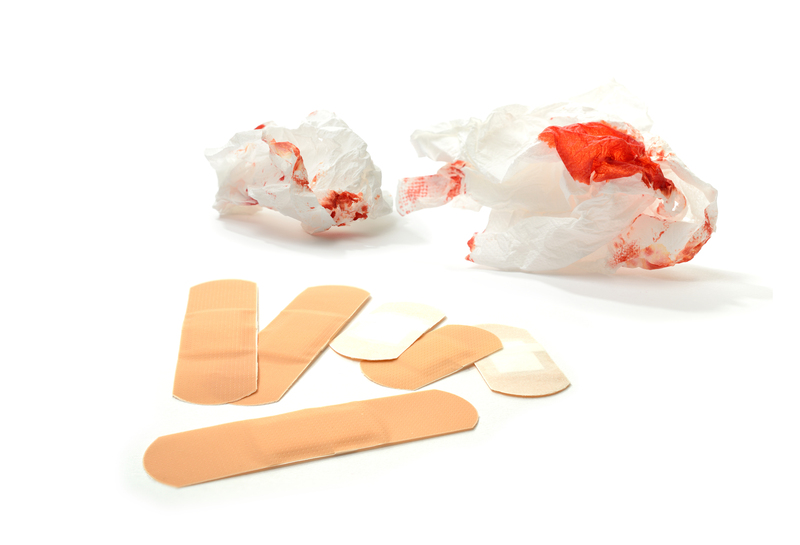How to properly clean and sanitize your kitchen surfaces
Posted on 24/07/2024
Keeping your kitchen clean and sanitized is crucial for maintaining a healthy and hygienic environment. The kitchen is where we prepare and store our food, making it a prime breeding ground for bacteria and germs if not properly cleaned. With the recent pandemic, it has become more important than ever to ensure that our kitchen surfaces are thoroughly sanitized to reduce the spread of germs and keep our families safe. In this article, we will discuss the proper methods and products for cleaning and sanitizing your kitchen surfaces.
Cleaning vs Sanitizing
Before we dive into the steps for cleaning and sanitizing your kitchen surfaces, it's important to understand the difference between cleaning and sanitizing. Cleaning refers to the physical removal of dirt, grime, and debris from a surface. While this may make a surface appear clean, it does not necessarily kill germs or bacteria. On the other hand, sanitizing involves using chemicals or heat to kill the majority of germs and bacteria on a surface. Therefore, both cleaning and sanitizing are important steps in maintaining a hygienic kitchen.

The Proper Steps for Cleaning and Sanitizing Your Kitchen Surfaces
1. Clear and declutter: Before you begin cleaning, make sure to remove any clutter or items from your kitchen surfaces. This will allow you to clean more thoroughly and prevent any missed spots.
2. Start with hot soapy water: The first step in cleaning your kitchen surfaces is to use hot soapy water to remove any visible dirt, grime, or food residue. Be sure to use a scrub brush or sponge to thoroughly clean all areas.
3. Rinse with clean water: After scrubbing with hot soapy water, rinse the surface with clean water to remove any remaining soap residue.
4. Apply a disinfectant: Once the surface is clean, it's time to sanitize it by using a disinfectant. There are many commercial disinfectants available on the market, but you can also make your own using a mixture of water and bleach (1 tablespoon of bleach per 1 gallon of water). Be sure to follow the instructions on the product or label for proper use.
5. Let it sit: After applying the disinfectant, let it sit for a few minutes to allow it to effectively kill any germs or bacteria on the surface.
6. Wipe clean: Once the disinfectant has had time to work, wipe down the surface with a clean cloth or paper towel. Be sure to use a new cloth or paper towel for each surface to avoid cross-contamination.
7. Air dry: It's important to let the surfaces air dry after cleaning and sanitizing, as this will help to prevent any recontamination.
Pros and Cons of Using Disinfectants
While using a disinfectant is an effective way to kill germs and bacteria in your kitchen, there are pros and cons to consider.
Pros:
- Kills majority of germs and bacteria on surfaces
- Easy to use
- Available in various forms (sprays, wipes, etc.)
- Can be made at home using simple ingredients
- Affordable
Cons:
- May contain harsh chemicals
- Can cause skin irritation if not used properly
- Overuse can lead to antibiotic resistance in bacteria
- Some products may have a strong smell
Tips for Maintaining a Clean and Sanitized Kitchen
1. Clean spills immediately: To prevent bacteria growth, clean up any spills or messes on your kitchen surfaces as soon as possible.
2. Use separate cutting boards for raw meat and produce: This helps prevent cross-contamination between different types of food.
3. Wash dishcloths and sponges frequently: These items can harbor bacteria and should be washed regularly to prevent the spread of germs.
4. Don't forget about handles and knobs: These areas are often overlooked but are frequently touched and can harbor bacteria. Be sure to wipe them down regularly with a disinfectant.
5. Wash your hands often: This is the first line of defense against spreading germs in the kitchen. Be sure to wash your hands with soap and water for at least 20 seconds before and after handling food.

Takeaways
Cleaning and sanitizing your kitchen surfaces is an essential step in maintaining a hygienic home. By following the proper steps and using the right products, you can effectively remove dirt and kill germs to keep your family healthy. Remember to clean spills promptly, use separate cutting boards, wash dishcloths and sponges, and wash your hands often for a germ-free kitchen.
Conclusion
Properly cleaning and sanitizing your kitchen surfaces should not be taken lightly. It is crucial for keeping your home clean and your family safe from harmful bacteria and germs. By following these steps, tips, and precautions, you can maintain a clean and sanitized kitchen that will promote a healthy environment for you and your loved ones. Remember, regular cleaning and sanitizing is key to preventing the spread of illness, especially during times like these when hygiene is of utmost importance.




